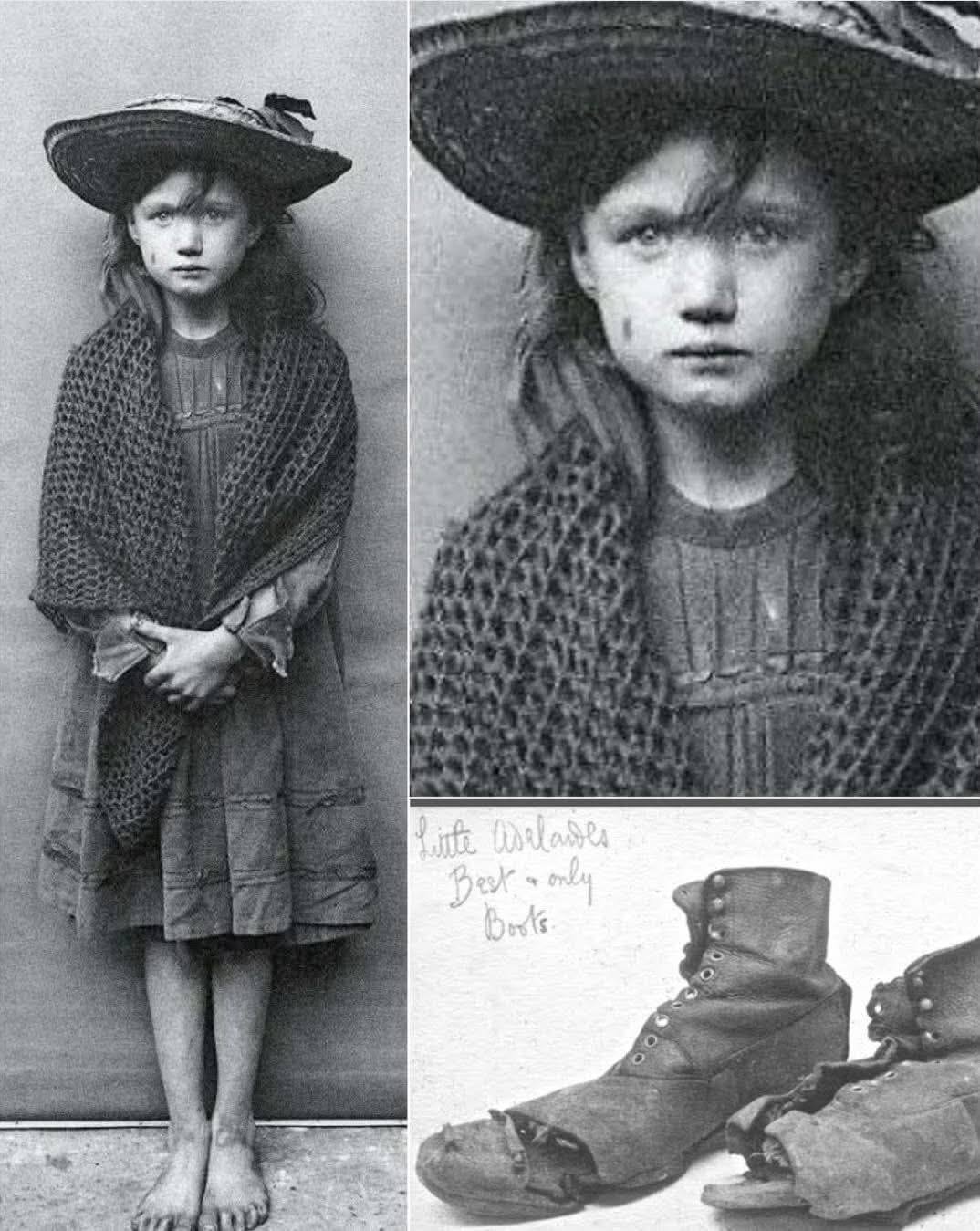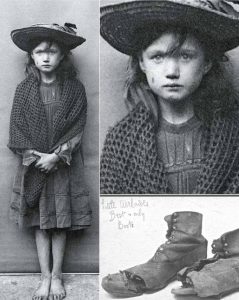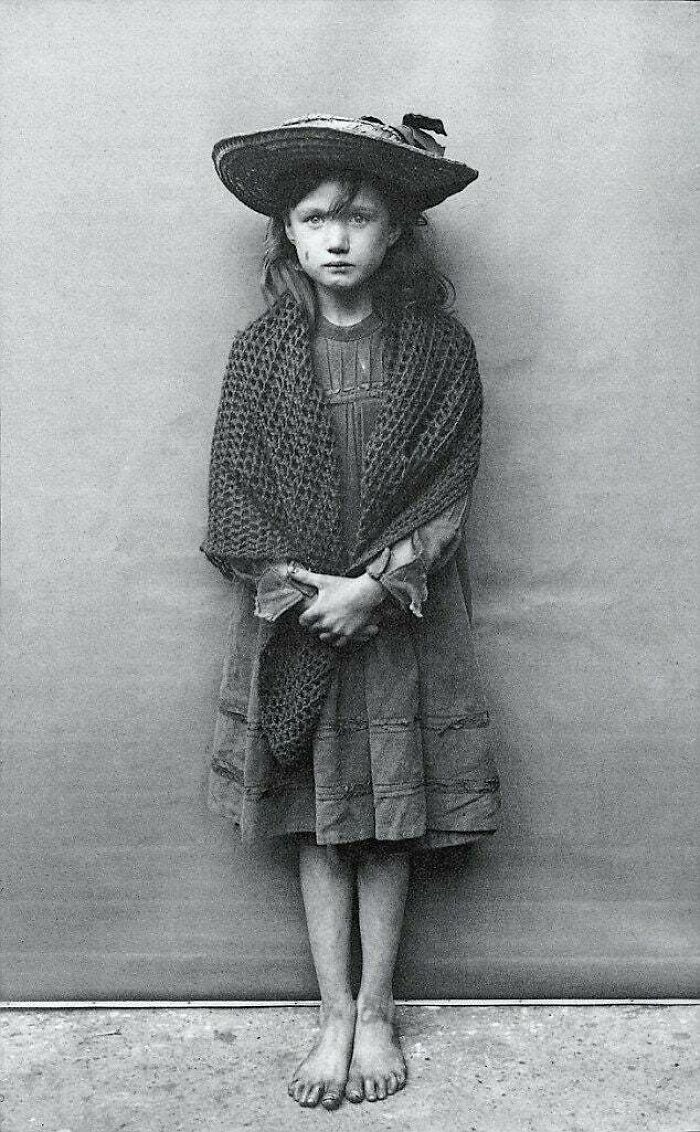The Unseen Shame: How a Little Girl’s Broken Shoes Exposed the Heart of Victorian Poverty

LONDON, EAST END, LATE 1800s – While Victorian London was busy celebrating its imperial grandeur, a different reality festered in the cramped, smoky alleys of the East End. Here, poverty was a way of life, and innocence often dissolved before childhood even ended. Amidst this grim landscape, a little girl named Adelaide Springett became an unintentional, heartbreaking symbol of a forgotten generation, all thanks to the discerning lens of a teacher.

The photographer was Horace Warner, a quiet, compassionate volunteer who taught at the local Ragged School. Warner was not a professional artist; his mission was simple and urgent: to bear witness. Armed with his camera, a revolutionary tool for social change, he documented the harsh, overlooked lives of poor children in the London slums, using his images not for gallery shows but to stir compassion and raise awareness among the wealthy classes. To further his cause, he even wrote gentle, fairytale-style stories under the pseudonym “Silverwing,” weaving narratives around harsh truths to draw attention to the chronic injustice these children faced daily.
The Quiet Act of Dignity
On the day the portrait was taken, Adelaide, likely accustomed to posing for the kind volunteer, presented herself in a dress that signaled her best effort. Yet, the moment the camera was raised, a quiet shame overcame her. Her shoes were broken, worn past repair, visible symbols of her family’s destitution.
In a profound, unscripted act of dignity, Adelaide removed them. She stood barefoot for the camera, choosing to face the lens without the worn footwear rather than let them stand as evidence of her poverty. Warner captured the haunting portrait, titled “Adelaide Springett in all her best dresses.” The image shows a child stripped of material comfort but not of her inherent courage.

Moved by this singular, painful gesture, Warner felt the story was incomplete. He knew the true, silent tragedy lay in the discarded footwear. He later photographed the shoes alone, writing the title that etched the moment into history: “The best and only shoes of little Adelaide.”
The Legacy of the Broken Shoe

This pairing of photographs—the proud, barefoot child and the abandoned, broken shoes—is more than a portrait; it is a quiet cry from the past. The image of the shoes is an eloquent statement on systemic neglect, revealing the true cost of poverty in a way no government report ever could.

Adelaide Springett’s photograph lives on, challenging us to this day. Her story reminds us that the struggle of poverty has a face, a name, and a story, and that courage does not require wealth. It is an eternal testament to the power of a single moment captured with empathy, forever compelling us to see those who are too often invisible. The work of Horace Warner proved that photography, when wielded by a compassionate heart, can become the most potent weapon against social injustice.
